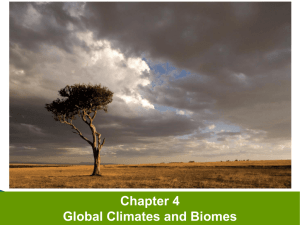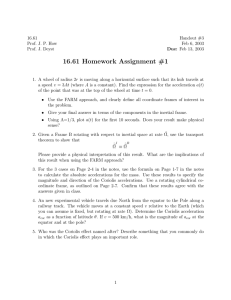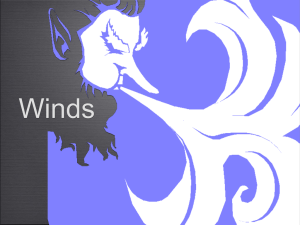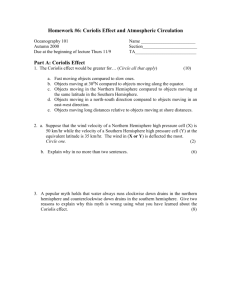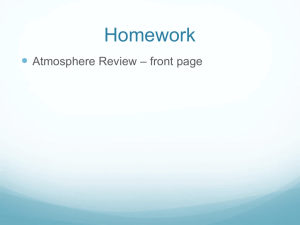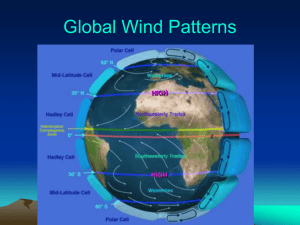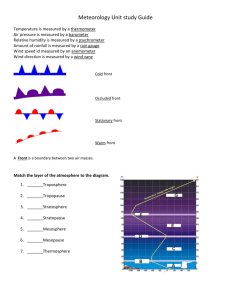Review sheet – Chapter 7 Know that the atmosphere mainly of
advertisement
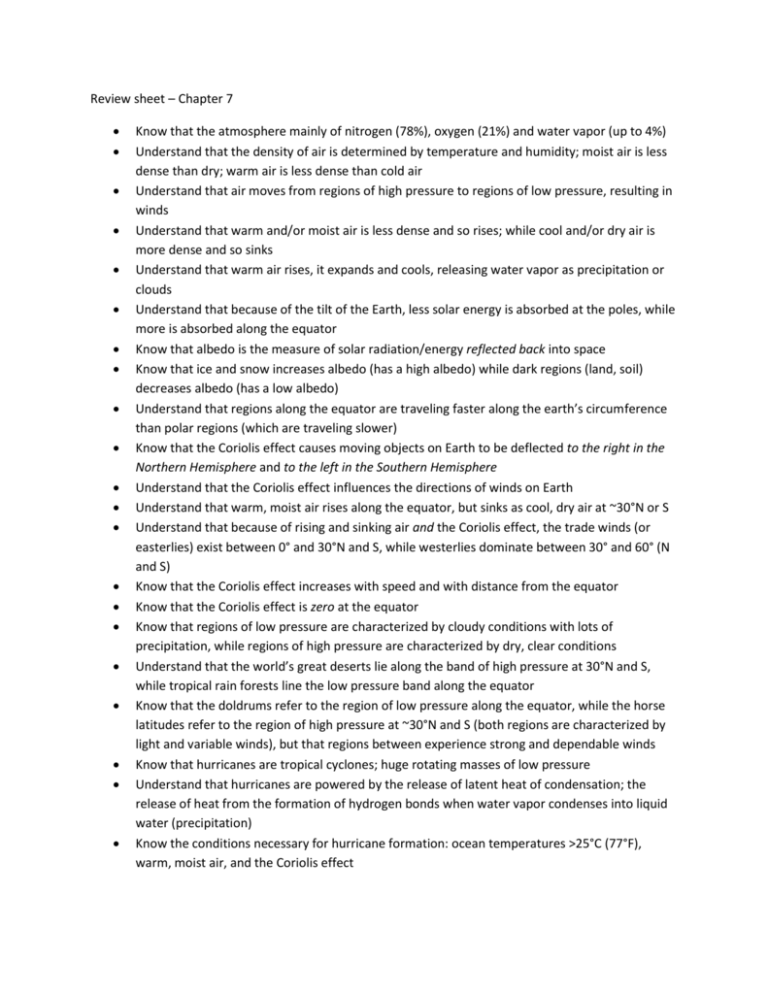
Review sheet – Chapter 7 Know that the atmosphere mainly of nitrogen (78%), oxygen (21%) and water vapor (up to 4%) Understand that the density of air is determined by temperature and humidity; moist air is less dense than dry; warm air is less dense than cold air Understand that air moves from regions of high pressure to regions of low pressure, resulting in winds Understand that warm and/or moist air is less dense and so rises; while cool and/or dry air is more dense and so sinks Understand that warm air rises, it expands and cools, releasing water vapor as precipitation or clouds Understand that because of the tilt of the Earth, less solar energy is absorbed at the poles, while more is absorbed along the equator Know that albedo is the measure of solar radiation/energy reflected back into space Know that ice and snow increases albedo (has a high albedo) while dark regions (land, soil) decreases albedo (has a low albedo) Understand that regions along the equator are traveling faster along the earth’s circumference than polar regions (which are traveling slower) Know that the Coriolis effect causes moving objects on Earth to be deflected to the right in the Northern Hemisphere and to the left in the Southern Hemisphere Understand that the Coriolis effect influences the directions of winds on Earth Understand that warm, moist air rises along the equator, but sinks as cool, dry air at ~30°N or S Understand that because of rising and sinking air and the Coriolis effect, the trade winds (or easterlies) exist between 0° and 30°N and S, while westerlies dominate between 30° and 60° (N and S) Know that the Coriolis effect increases with speed and with distance from the equator Know that the Coriolis effect is zero at the equator Know that regions of low pressure are characterized by cloudy conditions with lots of precipitation, while regions of high pressure are characterized by dry, clear conditions Understand that the world’s great deserts lie along the band of high pressure at 30°N and S, while tropical rain forests line the low pressure band along the equator Know that the doldrums refer to the region of low pressure along the equator, while the horse latitudes refer to the region of high pressure at ~30°N and S (both regions are characterized by light and variable winds), but that regions between experience strong and dependable winds Know that hurricanes are tropical cyclones; huge rotating masses of low pressure Understand that hurricanes are powered by the release of latent heat of condensation; the release of heat from the formation of hydrogen bonds when water vapor condenses into liquid water (precipitation) Know the conditions necessary for hurricane formation: ocean temperatures >25°C (77°F), warm, moist air, and the Coriolis effect Know that hurricanes rotate counter-clockwise in the Northern Hemisphere, but clockwise in the Southern Hemisphere Understand that hurricanes cannot form below 8°N or S because the Coriolis effect is not strong enough here Know that the hurricane season is June 1 – Nov 30; when the ocean temperatures are highest


